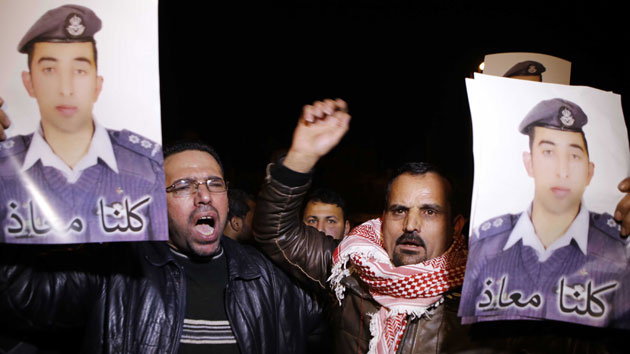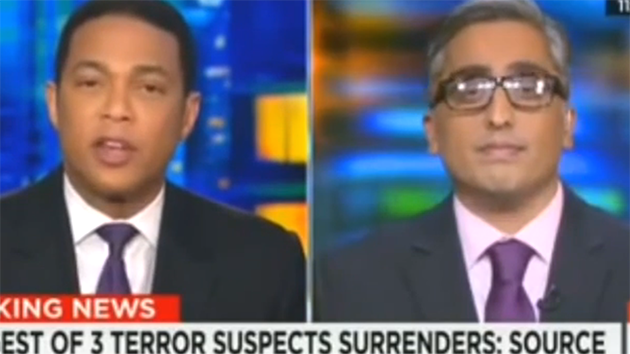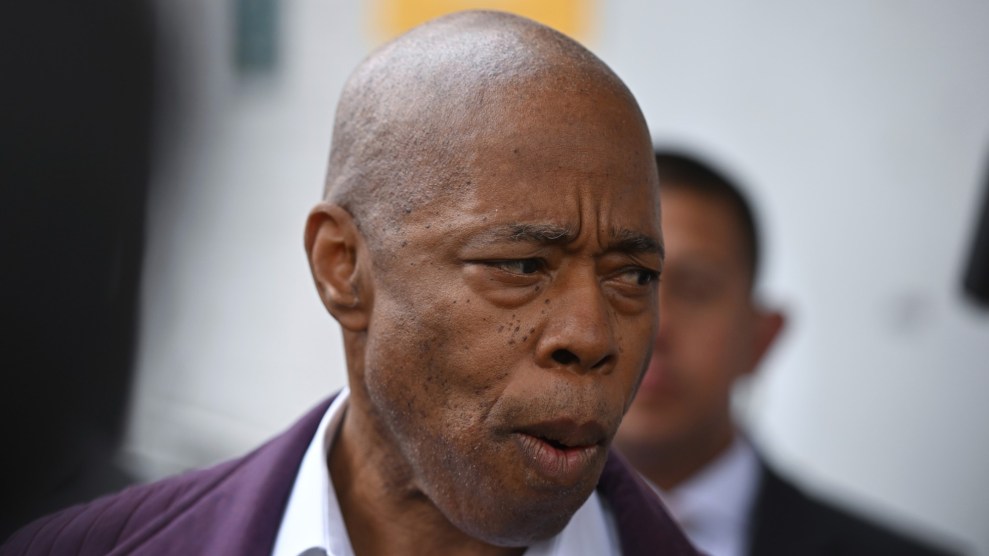Editor’s note: The videos in this post do not show any bloodshed.
If you close your eyes and ignore the sickening visuals—the man in the ditch pleading for his life, the soldiers face down in the dirt with blood pooling beneath them—and simply listen to the backing track, you will hear “Saleel al-Sawarim,” a hauntingly beautiful a cappella Arabic hymn.
It has no instruments, just a subtle sway in the vocal melody—the singer’s voice digitally layered to give the impression of a chorus in perfect harmony. This jihadi song, known as a nasheed, was produced by the Islamic State in mid-2014 to accompany its fourth Clanging of the Swords video, a medley of battles, executions, and assorted war crimes.
“Saleel al-Sawarim” might put you into a meditative trance were you not so horrified. Listen to a few of these nasheeds, and you might even guiltily catch yourself humming along. “They’re so melodic and so intense that people immediately like the sound,” says Pieter Van Ostaeyen, an independent researcher who has studied jihadi music. If you listen to the hymn, and only the hymn, “very calmly,” he adds, “it gives you some kind of spiritual experience…But most people have absolutely no idea what they’re listening to.”
Indeed, the lyrics celebrate bloodshed and holy war. “The path of fighting is the path of life,” the “Saleel al-Sawarim” singer drones as militants pepper a vehicle full of people with machine guns. Another verse, shortly before we see the ISIS minions force some Iraqi soldiers to dig their own graves, goes: “The banner has called us, to brighten the path of destiny, to wage war on the enemy, whosoever among us dies, in sacrifice for defense, will enjoy eternity in paradise.”
Nasheeds are not just an ISIS thing, but they accompany all of the group’s videos, and are played during its military parades, proselytizing events, Ramadan recruitment drives, and during its “caliphate establishment ceremony” in Raqqa, Syria, the so-called Islamic State’s de facto capital.
The songs have become increasingly vital to the organization’s identity. Islamist propaganda in general—the videos, the nasheeds, the information dumps—has been at the core of ISIS’s branding and recruitment efforts. “By producing a visual record of everything it does, ISIS has greatly amplified its political impact,” the Irish journalist Patrick Cockburn writes in his new book, The Rise of Islamic State. “Its militants dominate social media and produce well-made and terrifying films to illustrate the commitment of their fighters as they identify and kill their enemies.”
Phillip Smyth, a researcher of Middle Eastern affairs at the University of Maryland who has an unabashed obsession with jihadi music, told me that violent videos set to nasheed soundtracks are ideally suited to the young men ISIS wants to target. “If you are really trying to recruit and indoctrinate people, music is a fantastic way to do it,” he says. “It’s like Wagner being set to Apocalypse Now.”
Academics trace contemporary nasheeds back to the 1970s and 1980s “Islamic resurrection” movements in Egypt and Syria. You’ll find them in videos eulogizing the mujahideen of the Chechen wars. In his book The Looming Tower, journalist Lawrence Wright wrote that Osama Bin Laden himself founded a nasheed group in his youth, and distributed tapes to friends.
ISIS and with most other Sunni jihadist organizations consider musical instruments haram (forbidden). Mainstream Islamic scholars have debated whether nasheeds are religiously acceptable, and most agree that they are—particularly in wartime, and when no instruments are used. Smyth says the Taliban, despite its tendency of “smashing boom boxes” and shutting down radio stations, now uses taranas (sung poems similar to nasheeds) to promote its organization. Even Iran’s Ayatollah Khomeini, who “used to be extremely anti-music in almost every way, later on he realized that there was a good propaganda use for it,” he says.
On the other end of the spectrum, Shiite militant groups delight in producing nasheeds that are far more flamboyant. Hezbollah has even had marching bands, Smyth says. Their nasheeds often pulse with drums, strings, and an abundance of Auto-Tuned vocals. The videos are “so packed with young men dancing they seem more boyband than militia,” the Guardian noted.
ISIS “would never cross the line of going beyond a cappella,” says Aymenn al-Tamimi, also of the Middle East Forum. But that hasn’t seemed to affect the popularity of its nasheeds. YouTube nasheed channels refer to “Saleel al-Sawarim” and other ISIS songs like “Dawlat al-Islam Qamat”—which The New Republic called “the most influential song of the year“—as the “best” jihad nasheeds. The videos have generated hundreds of thousands of views.
No one outside of ISIS knows exactly who does the musical arrangements. “This is something that is in obscurity,” Tamimi says. “It fits with the wider modus operandi of ISIS in which there is a heavy cult of personality around Baghdadi, but in terms of who is around him, it tends to be much more in the dark.”
The group’s nasheeds come from the Ajnad Media Foundation, which ISIS leader Abu Bakr al-Baghdadi established in the summer of 2013 specifically for this purpose. (Most jihadists recycle existing nasheeds.) “The development of Ajnad Media comes within the context of ISIS asserting a more distinct identity,” Tamimi told me. “If you’re producing songs specifically for your group, with emphasis on themes like the coming establishment of the caliphate, the need to pledge allegiance to Baghdadi, and so on, that really helps mark ISIS out from other jihadi groups.”
In fact, one of the group’s earliest nasheeds raises the proverbial middle finger to Al Queda. Baghdadi established Ajnad Media Foundation shortly after boldly ignoring the demand from Al Qaeda leader Ayman al-Zawahiri that the Islamic State leave the fighting in Syria to Al Qaeda’s Syria affiliate. This was seen as the ultimate snub, foreshadowing an official rift between the groups. Shortly thereafter, Ajnad Media produced a nasheed titled “They Have Closed Ranks and Pledged Bay’ah to Baghdadi,” which declares Baghdadi the rightful ruler of the coming caliphate. The group’s message, Tamimi says, was: “‘It’s us and not Al Qaeda who are leading the project.'”
During ISIS’s military advances in the spring and summer of 2014, which led to its takeover of Mosul, the group released timely nasheeds about what was happening on the ground. “They produced a song that can best be described as them trolling [former Iraq president] Nouri al-Maliki, saying, ‘Maliki, your days are numbered. We’re going to finish you.'” Smyth says. “Here’s this group which people might say is overextended, and they’re really fighting hard and they’re making all these advances, oh, and by the way, their media organs are still producing music. It conveys a very strong message.”
Last week, after ISIS released a video of the Jordanian pilot Moaz al-Kasasbeh being burned alive, Ajnad Media released a new nasheed, “Soon, Soon,” that Tamimi told me accompanied the execution. “To destroy you, my sword has been sharpened,” it goes. “We have marched by night, to cut and slaughter…We have filled the roads with red blood, with the darkness of bayonets, with the striking of the necks.”
The nasheeds might not be half so terrifying, however, were they not so catchy. “I remember some jihadi songs better than I remember songs by Boston,” Smyth told me. “And that is a problem.”
Correction: This post originally stated that Pieter Van Ostaeyen was an analyst at the Middle East Forum. He is in fact independent.

















